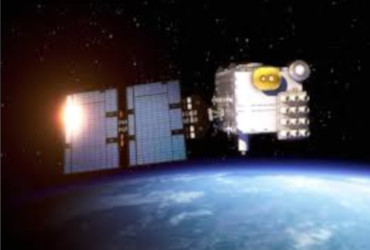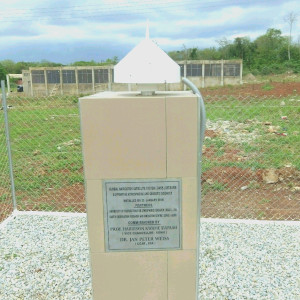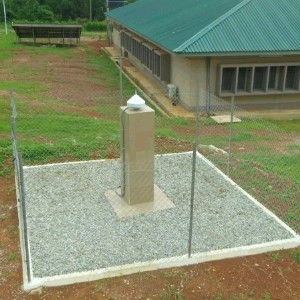High-Precision Satellite-Based Atmospheric Monitoring for Climate, Weather, and Space Science
Overview
Observing the Earth’s atmosphere is one of the most complex tasks in earth science, owing to its dynamic nature and the rapid variability of weather, climate, and space weather conditions. At EORIC, we leverage the latest in satellite-based technology, particularly the Global Navigation Satellite Systems – Radio Occultation (GNSS-RO) technique, to enable high-accuracy, near-real-time atmospheric profiling for advanced meteorological research and applications in Ghana and across West Africa. Through strong partnerships with global institutions, EORIC operates a GNSS Reference Receiving Station as part of a worldwide satellite tracking network—providing critical data for research, education, and national capacity development in climate science, space weather, and numerical weather prediction.
What is GNSS-Radio Occultation (GNSS-RO)?
GNSS-RO is a cutting-edge satellite remote sensing technique that uses radio signals transmitted from GNSS satellites (like GPS) and received by Low Earth Orbit (LEO) satellites to profile the Earth’s atmosphere. As the signal passes through different layers of the atmosphere, it bends due to refraction, allowing precise measurements of:
– Atmospheric pressure and temperature
– Humidity and moisture content
– Tropopause height
– Ionosphere density and space weather conditions
GNSS-RO has proven to be significantly more accurate than traditional station-based observations and other remote sensing methods—especially in data-sparse regions like West Africa.
COSMIC-2: A Game Changer in Atmospheric Science
EORIC’s GNSS capabilities are supported by data from the FormoSat-7 / COSMIC-2 mission—a collaborative effort between:
– National Oceanic and Atmospheric Administration (NOAA) – USA
– National Space Organization (NSPO) – Taiwan
– NASA Jet Propulsion Laboratory (JPL) – Developer of the TGRS (Tri-GNSS Radio Occultation System)
– U.S. Air Force – Providers of space weather payloads (RF Beacon & IVM instruments)
Launched in June 2019, the six COSMIC-2 satellites provide over 12,000 high-quality atmospheric and ionospheric profiles daily, revolutionising global weather forecasting and space weather research.
EORIC’s GNSS Receiving Station
In partnership with the University Corporation for Atmospheric Research (UCAR), USA, the University of Energy and Natural Resources (UENR) has installed a GNSS Reference Receiving Station on its campus in Sunyani. This station:
– Is part of the UCAR Terrestrial GNSS Tracking Network
– Feeds data into international systems for radio occultation processing
– Supports research in weather modelling, climate variability, and atmospheric physics
Research & Education Opportunities
This service provides a platform for:
– Postgraduate research opportunities (MSc & PhD) in climate science, atmospheric modelling, and space weather
– Access to GNSS-RO datasets for academic and institutional research
– Joint publications and collaborative research with UCAR, NCAR, and NOAA scientists
– Educational engagement in radio occultation, GNSS data processing, and remote sensing science
What We Offer
– Real-time atmospheric data access from COSMIC-2
– Integration of GNSS-RO data into numerical weather prediction models
– Support for space weather early warning systems
– Capacity building in GNSS data processing and interpretation
– Technical support for research institutions and policy-makers
Beneficiaries
– Meteorological agencies and forecasters
– Climate scientists and researchers
– Disaster risk management bodies (e.g., NADMO)
– Higher education and postgraduate students
– Government ministries (e.g., Ministry of Environment, Ministry of Communications)
Strategic Partnerships
– University Corporation for Atmospheric Research (UCAR)
– National Center for Atmospheric Research (NCAR)
– NOAA, NASA, NSPO, U.S. Air Force
Together, these partnerships allow EORIC to remain at the forefront of atmospheric science and space-based environmental observation in Africa.
Interested in Using GNSS-RO Data or Collaborating?
Let us help you integrate GNSS-based observations into your research or operational workflow.
Email: eoric@uenr.edu.gh
Location: UENR Campus, Sunyani, Ghana




